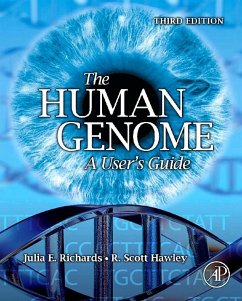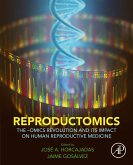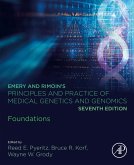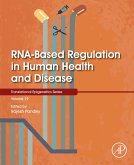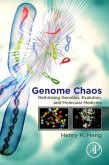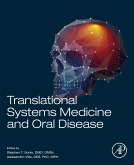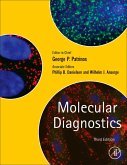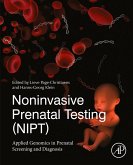Dieser Download kann aus rechtlichen Gründen nur mit Rechnungsadresse in A, B, BG, CY, CZ, D, DK, EW, E, FIN, F, GR, HR, H, IRL, I, LT, L, LR, M, NL, PL, P, R, S, SLO, SK ausgeliefert werden.
-- ANTICANCER RESEARCH 33: 745-746 (2013), February 2013
""Every year, Choice subject editors single out for recognition the most significant print and electronic works reviewed in Choice during the previous calendar year. The Human Genome, 3e, appearing annually in Choice's January issue, this prestigious list of publications reflects the best in scholarly titles and attracts extraordinary attention from the academic library community. The 2011 feature includes 629 titles in 54 disciplines and subsections.""
-- CHOICE Outstanding Academic Title, 2011
""Well written, up-to-date, and engaging, this new edition of The Human Genome (2nd ed., 2005; 1st ed., CH, May'99, 36-5066) by Richards (Univ. of Michigan) and Hawley (Stowers Institute for Medical Research) accurately reflects its subtitle. Densely packed with information, it is both easy to read and easy to understand. It includes full-color illustrations, charts, drawings, and tables. Case studies and sidebar interest boxes tell fascinating stories that capture the reader's interest and help make the material accessible to all. End-of-chapter study questions include brief essays and ideas for resource projects. A companion Web site provides additional questions, and indicates that an image bank and streaming video resources will soon be available. This work could easily be used for a freshman biology class or for individual reading for people interested in this subject. Yet, it has enough technical information and detail to be useful for an upper-level majors class in human genetics as well. It addresses all of the topics traditionally covered in a human genetics textbook without reading like a textbook. It strikes a perfect balance between being rigorous and engaging, and deserves to be included among the most popular current human genetics works.""
Summing Up: Highly recommended. Academic, general, and professional audiences, all levels.
C. A. Klevickis, James Madison University Reviewed in 2011 June CHOICE
""Better education and communication are two things that are emphasized over and over when it comes to determining the best way to make genomics a bigger part of the public's general health routine, or more mainstream. The User's Guide, as a text or reference, could be part of that conversation with the public. Because of how simply it begins, the book could be put to good use in high schools as students start to learn about the more complex fields of research and start to develop an interest in higher education in the sciences. It could also serve very well as a guide in higher education, to those pursuing more specialized fields like cancer research or personalized medicine, or even as a thought-provoking conversation-starter in ethics classes or discussions about the implications of advanced genomics research.""
-- Christie Rizk, February 2011 issue of Genome Technology, http://www.genomeweb.com
""The third edition of this comprehensive survey of the human genome provides a detailed examination of the science, both specifically biological and in a broader context, of human genetics. Intended for students and entry level researchers, the volume begins with simple gene mechanics and covers gene functions, chromosomes, complex traits, gene discovery, and genetics in testing and treatment. Chapters include numerous color illustrations, tables, sidebars and a large glossary as well as study questions with answers keys.""
-- SciTech Book News

